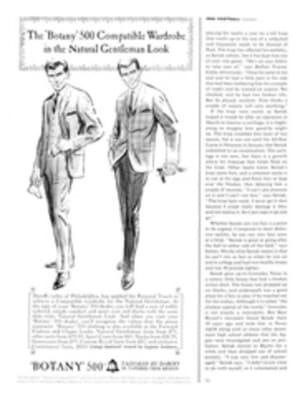
A book on the Australian racehorse Phar Lap reads like a mystery story
About midday on April 5, 1932 a magnificent horse from Australia named Phar Lap died suddenly in a guarded stall at a training farm near San Francisco. For most Americans that marked the beginning of the mystery of Phar Lap, centered on the question: Was Phar Lap poisoned? For many Australians, as I. R. Carter makes it clear in Phar Lap (Australian Book Center, New Rochelle, N.Y., $7), the death of Phar Lap was merely the climax of mysteries that began before he was foaled.
Phar Lap was out of Entreaty, a New Zealand mare, by Night Raid. But who was Night Raid? Soon after World War I an English trainer, Captain Tom Hogg, sold Night Raid (who had only one third place in two years of racing) for £120. In Australia, however, Night Raid was sold for stud for 1,400 guineas. After Phar Lap became famous, Captain Hogg was shown a photograph of Night Raid and exclaimed, "That was never Night Raid!" He believed horses had somehow gotten mixed up in being shipped. Mr. Carter suggests "the shippers might have sent an incorrect manifest." In any event, Entreaty's foal was bought in the New Zealand yearling sales in January 1928, for 160 guineas. But let Mr. Carter relate the circumstances in his breezy Australian prose. The buyer "was rather an unlikely character, a Russian-born Jew named David J. Davis, an American citizen who had come to Australia about 1921, opened a small photo studio, and then got into the china, silver and cutlery importing business." He made money and wanted to get into racing, but "he was a new chum at the game."
Harry Telford, a dour, uncommunicative trainer, was introduced to Davis by an unidentified individual "who later became Davis' business manager." Telford bought Phar Lap for Davis, but Davis was disappointed in the yearling's appearance and leased him to Telford for three years for one third of his earnings. In two years and nine months Phar Lap raced 50 times. He won only two in his first 10. But then in 25 months he raced 39 times and won 35 times. In the Australian Jockey Club St. Leger Stakes he ran 120 yards ahead of the field. Betting was paralyzed. Gunmen tried to maim him with buckshot, but missed. After 14 consecutive stakes wins as a 4-year-old Phar Lap lost only the Melbourne Cup as a 5-year-old, carrying 150 pounds while the winner carried 98.
His next race was the $100,000 Agua Caliente Handicap (reduced because of the Depression to $50,000 while he was en route from Australia). Weakened by an 18-day Pacific crossing, Phar Lap did not impress the tough characters who hung around the Agua Caliente track in Prohibition days. Davis snapped up the odds, getting as much as 6 to 1. Moreover, Phar Lap had never seen a starting stall before the race, and was given no training in one. The night before the race an attempt was made to shoot the president of the track. In the race itself Phar Lap, bewildered by the stall, was left 50 yards in back. He nevertheless led after six furlongs, and won easily. Davis rushed over the border after the race with the prize money "swollen by his betting clean-up." Phar Lap was hurried out of Mexico. Two weeks later he was dead. A Food and Drug Administration chemist reported Phar Lap's bodily organs "riddled with arsenic trioxide." A San Francisco toxicologist hired by Davis found none. The author reviewed the evidence and leaves it up to the reader, who is apt to get cold chills either way.
There are no such mysteries in Dervla Murphy's Full Tilt: Ireland to India with a Bicycle (Dutton, $4.95), but recent events have added an air of international melodrama to what are otherwise routine thrills—accidents, spills, attempted assaults—such as might be expected by a pretty young woman pedaling 4,445 miles alone across Europe and Asia. A sturdy Irish girl riding an Armstrong men's bike, Miss Murphy left Ireland in January 1963 and reached Delhi in July. She first used her automatic on a pack of wild dogs in the snowy mountains of Yugoslavia. In a hotel near the border of Turkey and Persia she was awakened and found an admirer in her room. She fired her automatic at the ceiling. He left. In Persia three elderly workmen tried to steal her bicycle. When she fired over their heads they dropped it and ran. Untroubled, she writes lyrically "I was cycling day after day beneath a sky of intense blue, through wild mountains whose solitude and beauty surpassed anything I had been able to imagine...."
Before his death last year J. Frank Dobie assembled notes and scattered writings for a book on rattlesnakes. In his earlier years, in The Mustangs and The Longhorns and The Voice of the Coyote, his best book, Dobie created a distinctive sort of Southwest regional document, mixing history, science, folklore, proverbs, tall tales and personal experiences, and the lore of the western diamondback rattler, a venomous reptile measuring 7 feet or so, seemed an ideal addition. Rattlesnakes (Little, Brown, $5) begins boldly enough. We learn that roadrunners kill rattlers, as do javelinas, wild turkeys and mocking birds. And there are good Dobie stories about early settlers hiding from Indians. Rattlesnakes invariably crawled into their hiding places. But interest wears thin, and the trouble is not with Dobie, but with rattlesnakes. Everybody in the Southwest seems to have nearly stepped on a rattler at one time or another. Dobie tried hard to like them—"natural, native and honest," he wrote, "belonging to the land that I belonged to"—but even Dobie could not really long for the good old days when there were more rattlesnakes everywhere.
Maurice Brooks's The Appalachians (Houghton Mifflin, $6.95) is part textbook, part nature essay, sometimes awkwardly presented, but interesting for its accumulation of little-known facts about a well-traveled and well-known area only a few miles from the biggest cities of the country. The forest over the mountains is one of the rarest on earth; there are 130 different species of trees in the Great Smokies alone, for instance, and only 85 in all Europe. An authority on wildlife management at West Virginia University, Professor Brooks likes to discuss the astounding numbers of birds and animals that have managed to survive in the 1,600-mile mountain chain. As many as 75,000 hawks in a single day have been counted migrating from Canada. Two observers on an Allegheny summit once counted 1,403 migrating warblers in three hours. Some two million razorback hogs exist in the Appalachian wilds. Elk herds have done so well in Virginia that limited hunting is now permitted. The book is the first in a series of popular natural histories edited by Roger Tory Peterson and John A. Livingston, intended to cover all regions of the U.S.
In 1933, Arnold Gingrich, aged 29, was the founding editor of Esquire magazine. In 1934 he was fishing with Ernest Hemingway in the Bahamas. Hemingway, he says, was a meat fisherman, intensely competitive and "a very poor sport." After two more seasons of unhappy fishing experiences on the Pilar (Esquire advanced Hemingway the money he needed to buy the boat), Gingrich gave up deep-sea fishing. It was not until 1939 that he discovered fly fishing, at a trout farm called the Fin 'n' Feather Club near Chicago, where you paid a dollar a pound for the trout you hooked from ponds of eager captives. That admission is made on page 30 of The Well-Tempered Angler (Knopf, $5.95), and the remaining 300 pages are an unabashed recital of his fascination with and subsequent mastery of the art. Twenty-one essays discuss such subjects as trout fishing in Austria after World War II, salmon fishing in Iceland, the achievements of Paul Young, who developed the Midge rod (under 7 feet and weighing 2 ounces or less) and of Al McClane, who perfected the double-line haul.

